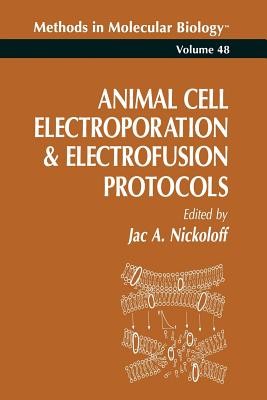
- We will send in 10–14 business days.
- Publisher: Humana
- Year: 2013
- Pages: 370
- ISBN-10: 1489940618
- ISBN-13: 9781489940612
- Format: 15.2 x 22.9 x 2.1 cm, softcover
- Language: English
- SAVE -10% with code: EXTRA
Animal Cell Electroporation and Electrofusion Protocols (e-book) (used book) | bookbook.eu
Reviews
Description
The ability to introduce macromolecules into animal cells, includ- ing DNA, RNA, proteins, and other bioactive compounds has facili- tated a broad range of biological studies, from biochemistry and biophysics to molecular biology, cell biology, and whole animal stud- ies. Gene transfer technology in particular will continue to play an essential role in studies aimed at improving our understanding of the relationships between the gene structure and function, and it has impor- tant practical applications in both biotechnology and biomedicine, as evidenced by the current intense interest in gene therapy. Although DNA and other macromolecules may be introduced into cells by a variety of methods, including chemical treatments and microinjection, el- troporation has proven to be simpler to perform, more efficient, and effective with a wider variety of cell types than other techniques. The early and broad success of electric field-mediated DNA transfer soon prompted researchers to investigate electroporation for transferring other types of molecules into cells, including RNA, enzymes, antibodies, and analytic dyes. Animal Cell Electroporation and Electrofusion Protocols begins with three chapters that describe the theoretical and practical aspects of electroporation, including a review of the commercially available instrumentation. These introductory chapters will be of particular inter- est to those new to electric field technologies and to those developing protocols for as yet untested species or cell types. Nineteen chapters follow that present well-tested protocols for electroporation of proteins and DNA into insect, fish, and mammalian cells.
EXTRA 10 % discount with code: EXTRA
The promotion ends in 15d.21:41:46
The discount code is valid when purchasing from 10 €. Discounts do not stack.
- Publisher: Humana
- Year: 2013
- Pages: 370
- ISBN-10: 1489940618
- ISBN-13: 9781489940612
- Format: 15.2 x 22.9 x 2.1 cm, softcover
- Language: English English
The ability to introduce macromolecules into animal cells, includ- ing DNA, RNA, proteins, and other bioactive compounds has facili- tated a broad range of biological studies, from biochemistry and biophysics to molecular biology, cell biology, and whole animal stud- ies. Gene transfer technology in particular will continue to play an essential role in studies aimed at improving our understanding of the relationships between the gene structure and function, and it has impor- tant practical applications in both biotechnology and biomedicine, as evidenced by the current intense interest in gene therapy. Although DNA and other macromolecules may be introduced into cells by a variety of methods, including chemical treatments and microinjection, el- troporation has proven to be simpler to perform, more efficient, and effective with a wider variety of cell types than other techniques. The early and broad success of electric field-mediated DNA transfer soon prompted researchers to investigate electroporation for transferring other types of molecules into cells, including RNA, enzymes, antibodies, and analytic dyes. Animal Cell Electroporation and Electrofusion Protocols begins with three chapters that describe the theoretical and practical aspects of electroporation, including a review of the commercially available instrumentation. These introductory chapters will be of particular inter- est to those new to electric field technologies and to those developing protocols for as yet untested species or cell types. Nineteen chapters follow that present well-tested protocols for electroporation of proteins and DNA into insect, fish, and mammalian cells.


Reviews